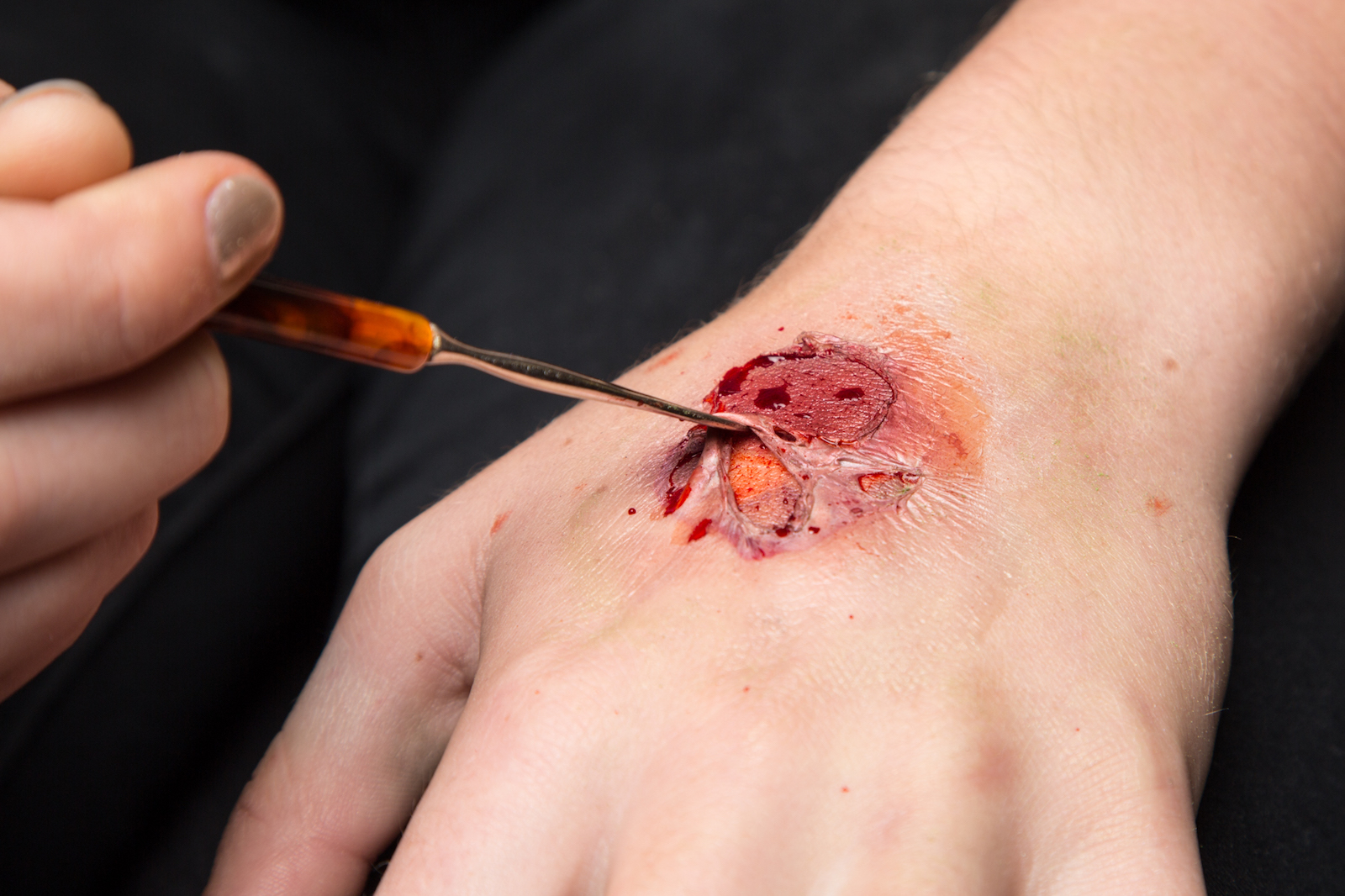
Fake blood is an important part of Halloween festivities, but many people don’t know that there are a ton of different varieties. You can make your own or buy it, but how do you know what kind you should get, or what recipe to use?
Well fear not, Make: reader, I am here to answer all of your fake blood questions assuming that the questions you have are the ones I am anticipating, because I am not a mind reader. But first, a brief history of fake blood.

Fake blood has been used for a ton of different applications. Most notably for film and stage productions, but realistic fake blood is also used in mélange for first responder training and for blood spatter analysis. The first fake blood used in film was actually chocolate syrup. Because film was shot all in black and white, they didn’t need to worry about the color — they would just squirt everyone with Hershey’s chocolate and let the gore begin.
Once color was added, it became a real challenge to get the color exactly right. Sometimes it’s too bright, sometimes it’s too purple, sometimes it’s too runny or too dark. Many filmmakers have embraced this by making wonderfully obvious and iconic fake blood. Think Quentin Tarantino’s Kill Bill. The blood was so watery and bright and… plentiful, that it isn’t really accurate, but it sure looks cool. So, I guess what you should take away from this is that there isn’t one right way to imitate blood and you just need to change it up based on the situation and personal preference.
What are the different kinds of fake blood?

There are a ton of different fake blood options and they all have their own pros and cons. I like to use store-bought liquid blood, blood powder, or edible mixtures depending on my needs.
There are lots of brands of store-bought liquid blood that are generally pretty similar. They’re a great all-purpose solution whether you need it to stain clothes or look fresh on a prop. Store-bought liquid options are available in everything from a tiny squeeze tube to large buckets, and can be purchased as needed. They usually have a viscous texture and a deep red color that looks bright when spread thinly. Be careful — not all options are edible. Be sure to check the label and follow any safety precautions.

Even among store-bought products, there’s a ton of variation. In addition to liquid products, there are gels and powders as well — the features you want to consider are color, viscosity, and oxidation. Depending on the applications you may want the blood to be runnier (try an alcohol-based blood) or more thick (try a corn syrup-based one). You also might want the blood to be bright and fresh or browning with age. The best strategy is to determine what specific effect you’d like the blood to have, identify a base material that will work, and then looking for products that use that material as a main ingredient.
For edible options you can always whip up a batch of your own using items you have in your pantry. There are a bajillion recipes online, but I’ve included my personal favorites below.
My favorite option for the amateur gore enthusiast is blood powder. I have used Ben Nye Mass Casualty Blood Powder, and this stuff really goes a long way. You can mix it with water, Vaseline, corn syrup, or whatever medium takes pigment well, and it creates a rich blood color that dries accurately. The best part is that a jar of the powder will last a really long time, because you only need a tiny amount, and it keeps well on the shelf. This stuff is potent though, so be prepared for some staining. Always do a spot test before using fake blood on something you don’t want to permanently color.
How do I make my own?
Dick Smith (of The Godfather, The Exorcist, Taxi Driver, etc.) developed the following classic recipe for fake blood. Kodak Photo-Flo is actually poisonous, so I don’t recommend using it, but otherwise it can be helpful to see how pros have concocted their materials in the past. If you’re aware of any proper substitutes for Photo-Flo, be sure to let us know in the comments!
- 1 quart White corn syrup
- 1 tsp Methyl paraben
- 2oz Red food coloring
- 5 tsp Yellow food coloring
- 2oz Kodak Photo-Flo
Here’s an awesome edible recipe from Steve Spangler Science:
- 16oz Powdered sugar
- 1oz Red food coloring
- 1T Cocoa powder
- Blend this all together and you’re ready to go!
Here’s another amazingly decadent recipe that’s great for spooky food. This one comes from How to Cake It and her amazing(ly gory) heart cake.
- 2 jars of Wilton Red No Taste food coloring
- ¼ cup Seedless raspberry jam
Have you used fake blood before? Leave us your stories and suggestions in the comments below!







